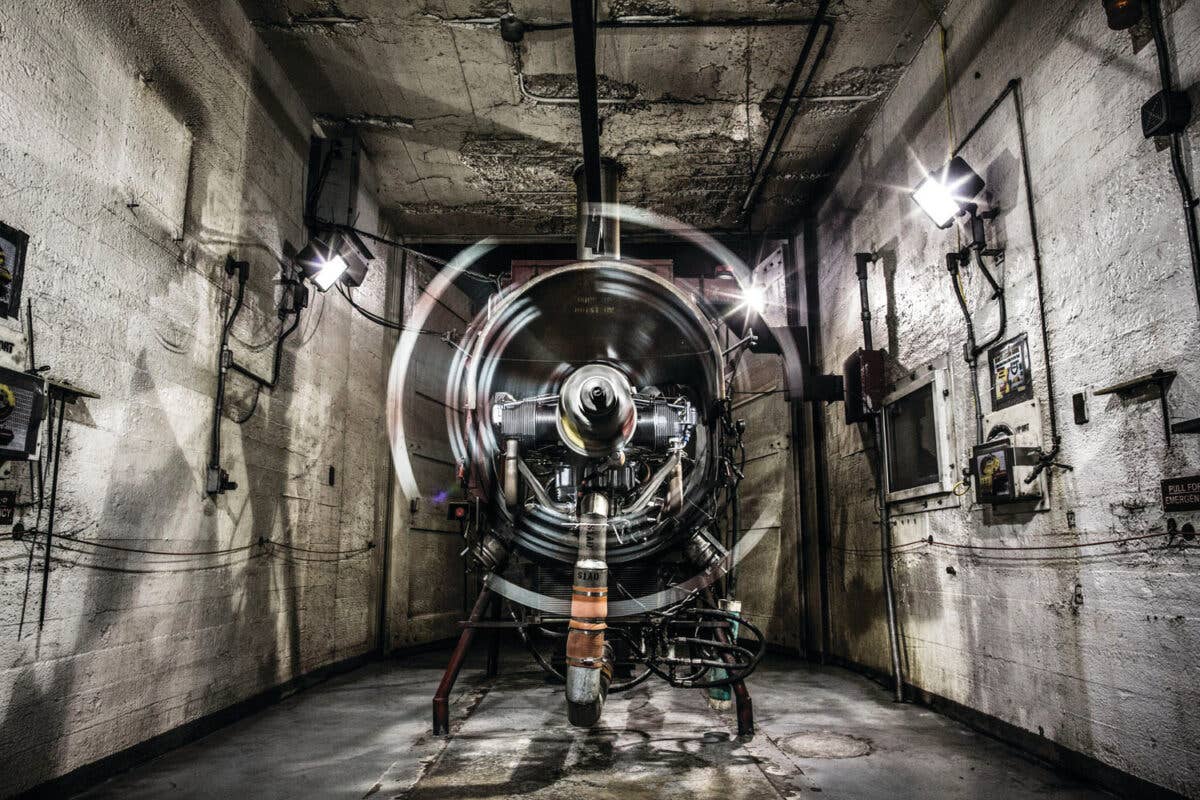Propelled by a New Power
A roundup of what’s new in the world of general aviation engines.

A technician tests a Thunderbolt engine built for Red Bull Air Race at the Lycoming engine factory. [Credit: Balazs Gardi/ Red Bull]
What powers the latest aircraft?
Though we’ve answered the question in the pages of FLYING over and over through the years, we’re truly at a crossroads as we begin 2023. While real alternative power sources—such as electric motors enabled by evolving battery solutions or liquid hydrogen—remain firmly in test mode, for the first time since the jet engine debuted, pilots can find new technology in both piston and turbine powerplants in operation on the flight line today.
Under the cowl of light sport aircraft, you’ll find a wide range of economical and lightweight engines, including the Rotax 912 series. The Austrian OEM has moved into heavier aircraft with its 915 series, going faster and higher than previous models. Continental has developed its “Continental Diesel” or CD series of jet-A-powered engines for piston singles, bringing increasing horsepower with each step up the ladder.
If you're not already a subscriber, what are you waiting for? Subscribe today to get the issue as soon as it is released in either Print or Digital formats.
Subscribe NowDiamond Aircraft has also led the game, with the Austro series for its singles and twins. Lycoming has taken amore traditional approach with the IO-390 models—but works extensively with innovators such as CubCrafters and other third-party skunkworks to tune its powerplants precisely for backcountry missions.
Pratt & Whitney continues its leadership in efficient, reliable turboprop-driven power with the PT6E line, which debuted in the Pilatus PC-12 and is now delivering a new level of operational data in the Daher TBM 960. Finally, GE Aerospace’s clean-sheet Catalyst is flying on the testbed Beechcraft Denali—and is focused towards certification.
Rotax 915 Series
Producing a maximum of 141 hp and max continuous at 5,500 rpm of 135 hp, the four-cylinder, liquid- and air-cooled 915 series engine from Rotax represents how the company has evolved its offerings for light aircraft over the past decades—though it's been around since 1920.
With a gear reduction box similar to that on Rotax’s familiar 912 series—and the addition of a turbocharger—the 915iS and 915iSC deliver healthy support for a larger aircraft’s electrical system as well as a service ceiling up to 23,000 feet msl. TBO remains on the low end compared to traditional piston engines—1,200 hours—but redundant fuel injection and ignition offer more peace of mind than others.
Continental CD Series
Continental Aerospace Technologies certificated the first of its series of diesel powerplants in 2006 with the CD 135 for light GA aircraft—but the history of the series goes back further, to the Centurion 1.7, first certified under EASA in 2002. The CD 135 weighs the same as the 1.7 (295.4 pounds), but improves it significantly. The CD 135 (at 135 hp) and its more powerful version, the CD 155 (at 155 hp), hold FAA type certification in the Cessna 172 and the PA-28, while the CD 155 can go into the DA40 TDi model—originally certificated with the CD 135—upon overhaul.
Austro E4 Series
Diamond Aircraft initially delivered its DA42 Twin Star with Theilert diesel powerplants on board when it debuted in 2002—and then had to suspend production when Theilert went out of business. The result? The pivot to the Austro AE 300, manufactured inhouse, and what Diamond now brands the E4 piston engine series, powering the DA42 IV. The four-cylinder, two-liter AE 300 produces 168 hp (123.5 kW) max continuous power, and Diamond began deliveries with it in 2009. The AE330 brings more power to the DA62—180 hp (132kW)—at the same weight (410 pounds). Both use a range of kerosene-based fuels, including jet-A-1, jet-A, and JP-8.
Lycoming 300 and IE2 Series
Lycoming Engines form the backbone of the piston single and twin fleet—but the company has managed to innovate into the 21st century as well. The company debuted the IO-390 line in 2018, which you can now find under the cowling of American Champion aircraft, at 210 hp, or the Cirrus SR20, at 215 hp. Now, the flagship of its offerings for piston singles is the iE2 series, featuring electronic ignition actuated with a single button to start.
Pratt & Whitney PT6E Series
Pratt & Whitney’s PT6 turboprop engines come in just about every flavor you could want for your single- or multiengine mount. But the Canadian OEM keeps pushing the lever forward, and in 2019 debuted the first of its PT6E series in the Pilatus PC-12 NGX. That variant brought the first dual-channel integrated electronic propeller and engine control system (EPECS) to the GA turboprop market. The PT6E-67XP’s thermodynamic rating of 1,845 shp—and 1,200 shp max—provide the lift and capability required for the PC-12’s utility and executive missions.
GE Catalyst
In development in the Czech Republic since the mid-2010s, the GE Aerospace Catalyst (originally the GE93 or Advanced Turboprop) targeted the Beechcraft Denali, a single-engine turboprop announced first by Cessna, and then Textron Aviation. Now deep into its on-aircraft testing phase, the clean-sheet design is producing the predicted 1,300 shp—with a significant reduction in parts and complexity over the PT6 series that it challenges.
This article was originally published in the February 2023 Issue 934 of FLYING.

Subscribe to Our Newsletter
Get the latest FLYING stories delivered directly to your inbox







